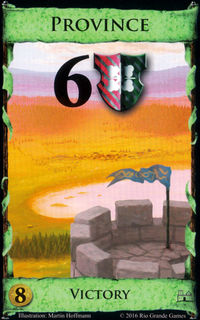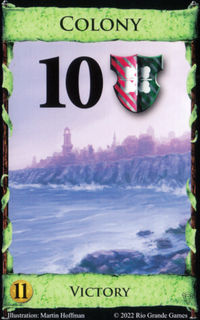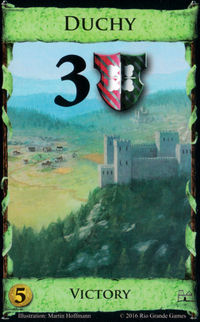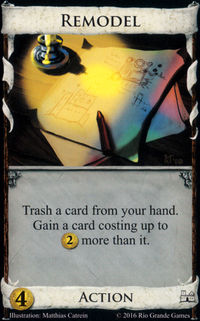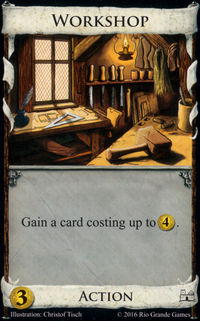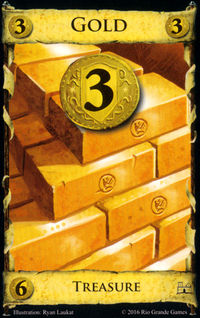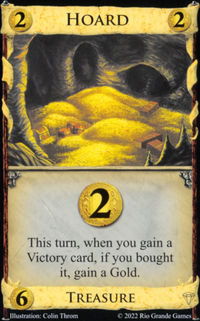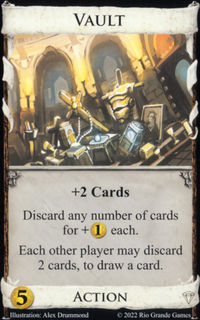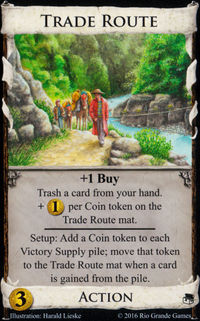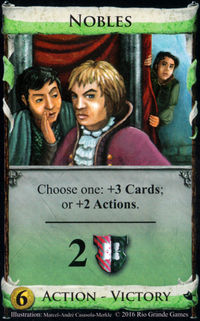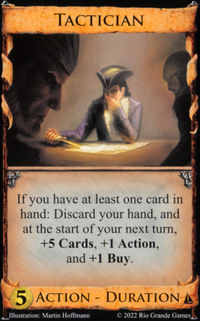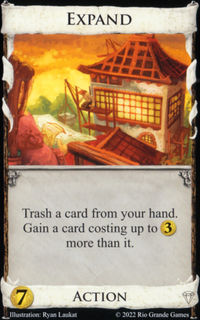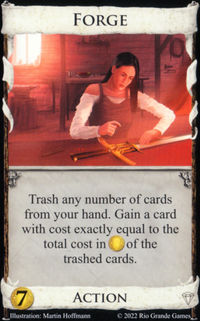Penultimate Province Rule
The Penultimate Province Rule (or PPR) is a guideline, primarily intended for 2-player and not 3- or 4-player games, on whether or not one should buy (or gain) the second-to-last Province in the game. Getting that penultimate Province gives another player the chance to buy the last Province and possibly win the game. The rule of thumb is to hold off on buying the penultimate Province if another player has a certain likelihood of getting the last Province and winning before your next turn. It is also applicable, with caveats, to races for Colonies, but not other Victory cards whose piles can run out without ending the game.
[edit] DominionStrategy.com article
Original article by theory
The most important — and the most dangerous — Province in the supply is the second-to-last one. Many games have been lost by buying this Province instead of a Duchy. Yes, you read that right. A Province instead of a Duchy can often be a mistake.
How is this possible? Let’s take a look at the simplest (and most common) scenario involving this rule: a 2-player game between Alice and Bob (Alice being Player 1) that’s coming down to the Province split. Assume (for now) that there are no +Buy cards, and no Remodel/Workshop/etc. cards that would allow a player to gain multiple Victory cards per turn.
The Provinces are 3-3 thus far. On Alice’s turn, she gets a nightmarish draw and is only able to purchase a single Estate. Bob jumps for joy: he’s drawn and can buy the second-to-last Province to go up by 5. But doing so would be a critical mistake. It allows Alice to end the game with a win by buying the last Province on her turn.
Instead, Bob’s correct move is to take a 2VP lead by buying a Duchy. Now Alice is in the same position as Bob was last turn: forced to buy a Duchy instead of possibly letting Bob split the Provinces for the come-from-behind victory.
Note that this rule didn’t apply to Alice on her Estate turn. In a tied single-buy game, when you are able to buy the second-to-last Province, you always should, because you are then almost guaranteed not to lose. In order for your opponent to win, he’d have to counter with an unanswered Duchy, and then the last Province; even if you don’t grab the other Province, the odds that you can’t match your adversary one-for-one with the lesser Victory cards are very low.
Note also that if Alice had gotten a Duchy on her Estate turn instead, meaning Bob can only tie Alice with his Duchy, then he should buy the Province instead. Intuitively, this can be rationalized by the fact that if Bob chooses to tie Alice, he is at a significant disadvantage: in tie games where Alice goes first, Bob normally only can win if he can get both of the last Provinces, since it’s unlikely that he can take a lead going into a 4-4 split. In other words, he’s a little more likely to draw, but much less likely to win; he may as well take advantage of his and hope Alice can’t finish him off.
To summarize, the Penultimate Province Rule states:
If you are trailing, do not buy the second-to-last Province if you can instead purchase lesser Victory card(s) to take the lead.
[edit] Exceptions
Naturally, like all rules, the PPR is subject to exceptions. Understanding these is key to successful 2p endgame play.
First, note that in practice the PPR operates slightly differently for Alice and Bob (P1 and P2). On Alice’s turn, if she buys the second-to-last Province when both players are tied, she is essentially inviting a draw. But if Bob buys the second-to-last Province in a tie game, he is actually close to forcing a win: Alice cannot buy the last Province for a draw because she will lose on turns. It’s an extremely powerful move, and as Alice you should seek to avoid such a situation (perhaps via +Buy cards, as below).
Second, the PPR also depends on your relative deck strengths. Against an opponent whose deck has more future potential than yours, you should not avoid the penultimate Province and prolong the game, but rather take advantage of the full power of your deck now. For instance, if you have been Salvaging and Remodeling your Golds into Provinces, and your opponent is running a Hoard/Vault/Trade Route deck, then avoiding the second-to-last Province dooms you to a battle of attrition you cannot possibly win.
Third, as briefly analyzed above, when the only chance you have of winning (or drawing) is to claim both of the last two Provinces, you should absolutely just go for broke. This includes situations where you can only tie your opponent by avoiding the penultimate Province. Here, you must take the gamble that your opponent won’t win the game next turn, since if your opponent can buy her fifth Province she will almost certainly win anyway. This commonly occurs when the Provinces have split 4-2, or when your opponent has such a substantial Duchy/Nobles/VP token lead that you will inevitably lose on a 4-4 split and must go for the 5-3 instead.
There is one exception to this “exception”: in Colony games, it is not necessarily true that you will always lose if your opponent gets 5 Colonies, since it is sometimes possible to win by establishing a major advantage in Provinces and/or Duchies. For instance, in this game, on turn 20 I draw , but the Colonies have split 4-2 in favor of my opponent and the Provinces are 2-2 for each of us. So I choose to buy a Province/Trade Route instead. He (correctly) takes the second-to-last Colony, and on my turn 21 I stock up on Provinces/Duchies/Estates, such that I now trail by 9 points with one Colony left. In the next two turns, we each get two Duchies, and on the final turn I take the last Colony for the win. It was incredibly unlikely that I could pull it off (though I was helped by the fact that my deck had untapped future potential — as described above — and Trade Route), but my victory was even less likely if I had gone for both Colonies: the chance I could get both was low, and even if I did, he could buy Provinces in the meantime to win even if I got to the 4-4 Colony split.
Fourth, the PPR becomes rather more volatile with multiple buys and/or gains. It isn’t sufficient to buy the second-to-last Province to take a slight lead; rather, you must buffer your lead against the possibility that your opponent is capable of multiple VP buys on her last turn. For instance, although Bob can normally safely buy the second-to-last Province in a tie game (and in fact often force a win in a single-Buy game), if Alice has multiple Buys, she might be able to sneak out the win with a Province/Estate buy. There’s no really good way to defend against this except observing your opponent’s deck. Past performance is usually a good indicator of future potential; see how many Golds (or how many +Buy cards) have gone by since the last reshuffle, and how many more can be drawn. Certainly Duration cards (Tactician in particular) can give you a strong hint as to the power of the opponent’s next hand.
A special case of this principle is when both you and your opponent are capable of gaining 2 Provinces at once. For example, with 4 Provinces left, if you are slightly behind, you might hesitate about buying the double Province if you believe your opponent is going to double Province for the win. This is especially pertinent in Tactician games.
Fifth, the PPR becomes considerably more complex with Remodel, Expand, Forge, Salvager, or any trash-for-benefit card. Similar to Tactician games, you have to watch out for double-Province gains: Remodel can turn a hand into two Provinces, and it’s much easier to draw + Remodel than . But more importantly, it’s even easier to draw + Salvager + a Province. If, in our first example, Bob blindly follows the PPR to take the lead with a Duchy, Alice can simply buy one of the Provinces and use one of her Provinces in hand to trash Bob’s next Province out of the supply (metaphorically). In other words, just because there are two Provinces left doesn’t necessarily mean you’ll get a shot at one of them!
Finally, the PPR is difficult to implement in games that involve substantial amounts of VP chips. The ability to gain an extra 4-10VPs while buying the last Province places such games in the same category as +Buy games, except most +Buy games don’t feature players able to buy a Province + 3 Duchies at once.
And of course, in games where both players have built an engine with lots of +Buy available, the game may very well end on piles instead of Provinces; similar ideas apply, since you don't want to put your opponent in a position to end the game with a win by buying out the last Caravans, but there are no hard-and-fast guidelines other than watching your opponent's deck and keeping their potential turn in mind.
The real takeaway from all of this is that endgame play is not simply about buying the biggest green card you can. There’s usually a very limited number of ways the Victory cards can split; good 2-player endgame play depends on being able to manipulate the game state such that the most likely possible endings are in your favor.
